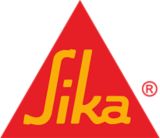
Sikaflex®-227
1-component fast skinning sealant
Sikaflex®-227 is a 1-component polyurethane sealant designed for car body sealing. It cures on exposure to atmospheric moisture to a durable elastomer. It adheres well to a wide variaty of substrates.
- Short cut-off string
- Fast skinning
- Low odour
- Overhead work possible
- Bonds well to a wide variety of substrates
- Can be sanded
- Can be painted
- Resistant to ageing
- Silicone free

